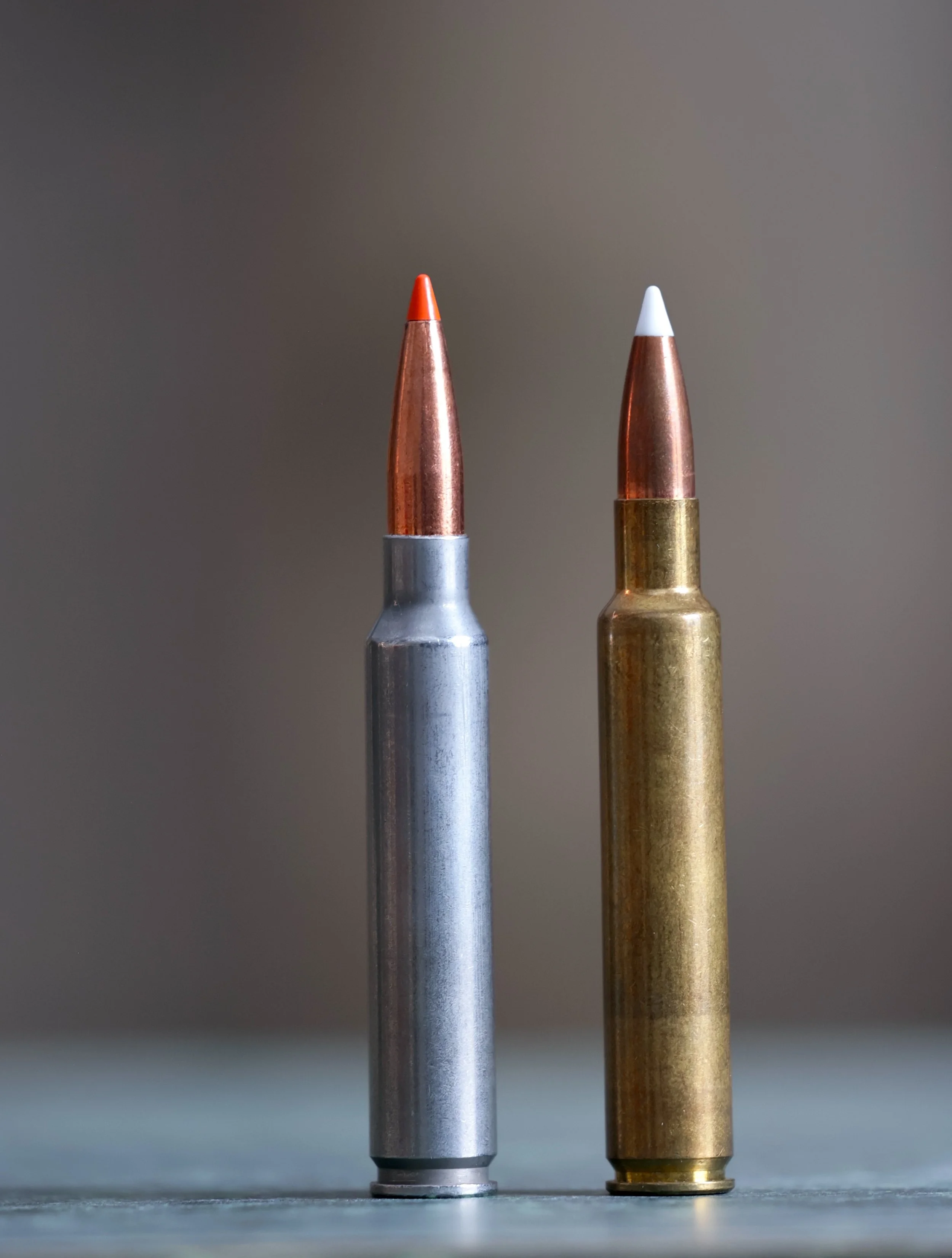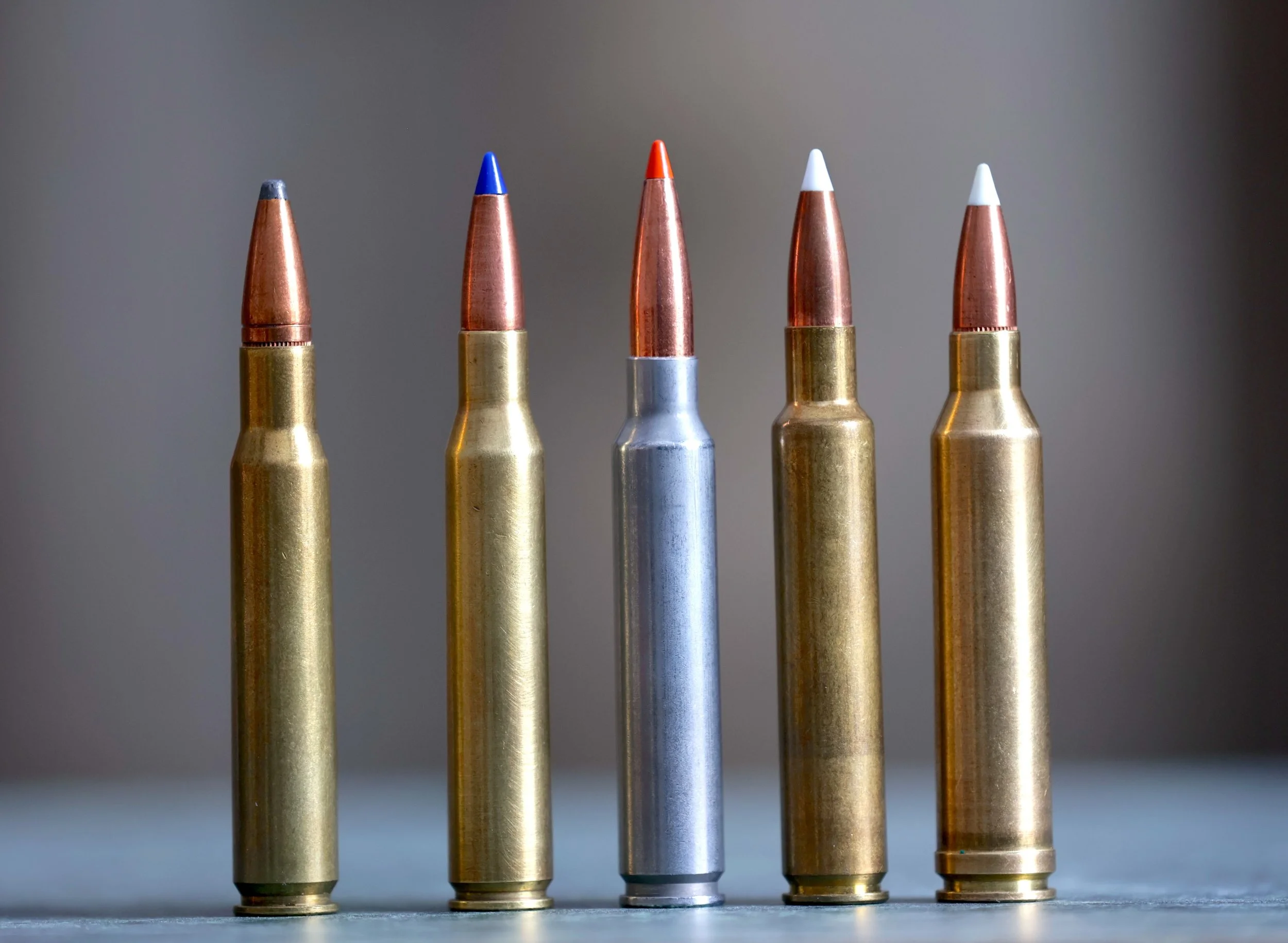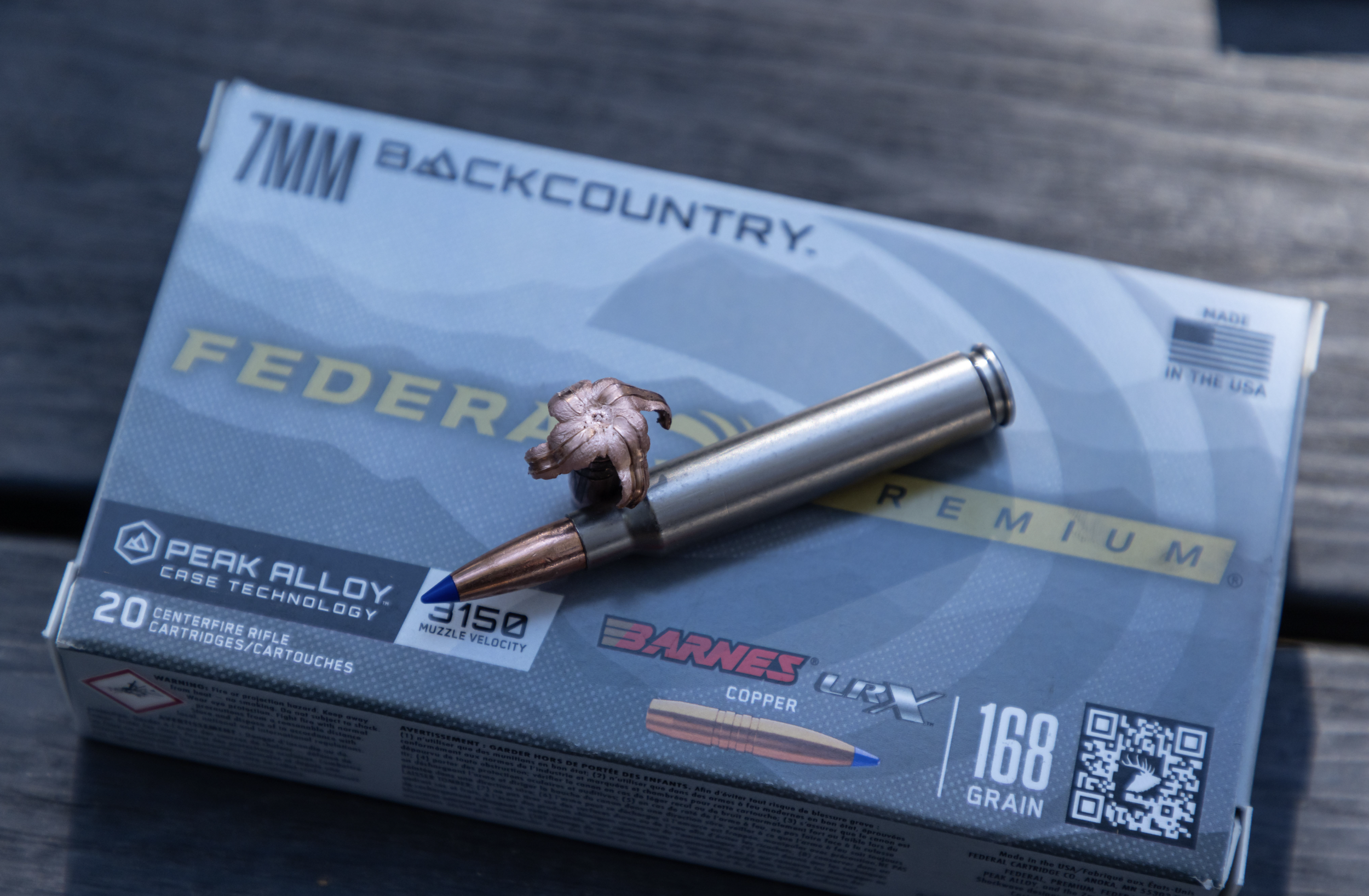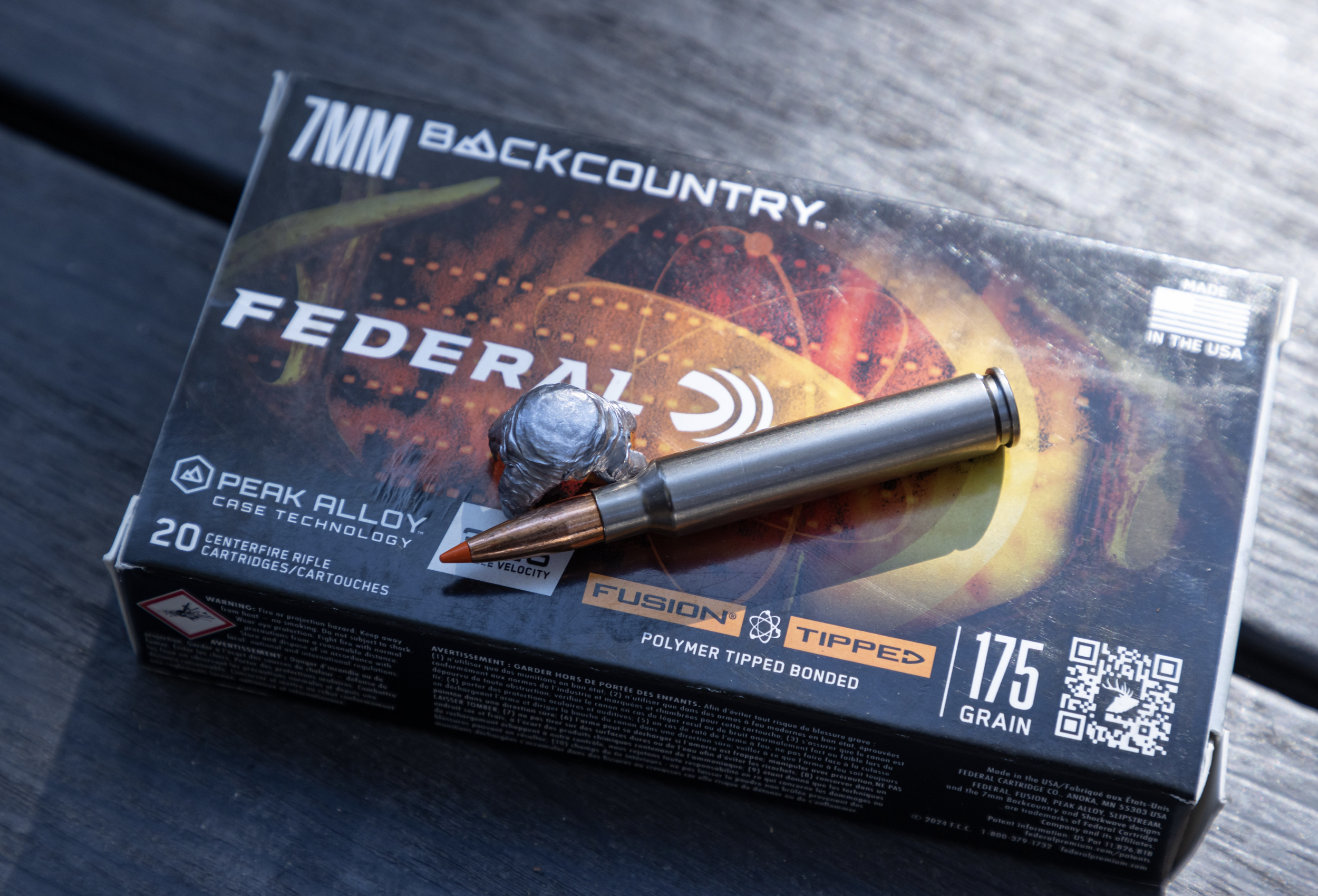7mm Backcountry: A Truly NEW Centerfire Cartridge
What? A new Federal 7mm Backcountry cartridge?
Here we go again.
Let’s stop the bickering and agree that the hunting world does not need new cartridges. But we’ll get more anyway. Ignore them if you want, but innovation isn’t going to stop. And sometimes it leads to a winner.
The 7mm Federal Backcountry might be one of those.
Federal’s new 7mm Backcountry is being loaded initially with five different bullets. Shown here are the 155-gr. Terminal Ascent, 168-gr. Barnes LRX, 175-gr. Fusion Tipped, and 195-gr. Berger Elite Hunter. Not shown is the 170-grain Terminal Ascent.
Historical Perspectives and the 7mm Backcountry
Before I reveal 7mm Federal Backcountry details, let’s compare a couple of famous 20th century cartridges that put things in perspective. Just as the 270 Winchester in 1925 wasn’t “needed,” its slight ballistic advantage over the 30-06 propelled it to impressive popularity that continues to this day. The 270 Win. can spit a 130-grain .277” bullet 3,150 fps! Ah, but do you realize the 30-06 can spit a 130-grain bullet 3,200 fps? Far downrange the .277 gains a slight advantage due to the inherently higher aerodynamic efficiency of its bullet, but honestly, for the vast majority of hunting applications for which both cartridges were employed over the last 100 years, either would have sufficed.
Both the 7mm Bakccountry (L) and 280 Ackley Improved are slightly modified 30-06 cases, but the 7mm Backcountry is engineered to contain 15,000 psi more pressure.
That analogy might apply to the 7mm Backcountry except for one critical difference we’ll expose a bit farther into this report. First, let’s have a look at this new “wonder” cartridge. First, it looks a near mirror image of the 280 Ackley Improved which is itself a slight alteration of the 280 Remington which sprang from a slightly modified 30-06. In fact, overall length of the 7mm Backcountry is 3.340 inches, the same as the 30-06. Shoulder angle is 30-degrees, same as on the hot new PRCs. So what could this new 7 possibly do that isn’t being done by older rounds?
The Short Answer!
Answer: The 7mm Backcountry propels bullets 75- to 100- fps faster than the 280 AI – from 4-inch shorter barrels! That’s the critical difference. Same performance from shorter barrels.
Yes, that’s the gist of this new “un-needed” centerfire cartridge. It gives hunters 280 AI performance (near 7mm Rem. Mag. performance) from convenient, carbine-length barrels. We’ll explain how in a bit, but for now you might ask “so what?” Have any of us failed to get our bucks and bulls lo these past 55 years because we were packing rifles with 22” and 24” barrels?
Well, maybe. If you’ve ever tried raising and swinging a 24-inch barreled bolt-action in thick brush and timber, you’ve likely hit a wall. Or more specifically a trunk, branch, or springy limb that thwarted your shot. A 20-inch barrel might have avoided that. Short and handy is largely what makes traditional lever action carbines like the Winchester M94 and Marlin 336 such popular “brush guns.”
L. to R. are 30-06, 280 Remington, 7mm Backcountry, 280 AI, and 7mm Rem. Mag. Allbut the Rem Mag are based on the 30-06 case.
The Sound Benefits of the 7mm Backcountry
But short barrels, per se, aren’t even the main point of the 7mm Backcountry. Suppressors are. Your ability to hear crickets and songbirds and your grandkids’ stories are the reason to consider a 7mm Backcountry rifle with a suppressor aboard.
I know, plenty of you under age 50 or so will scoff at this. Geez, hunters have survived muzzle blasts since at least 1776 and now we should get all worked up about a little ringing in the ears? Well, yes. Yes if you want to retain your ability to hear after age 50 what you heard at age 15. Trust those of us who suffer from muzzle blast hearing loss – this is a big deal. We can’t fully enjoy music because we can’t hear the overtones, even the high notes. We can’t enjoy the ambiance of a warm summer evening because we can’t hear crickets chirping. We can’t feel the rebirth of spring because we miss the cacophony of bird song. We get isolated in social settings because we can’t understand conversations. And we might not hear the howls of coyotes, the bugling of elk, the light crunching of a whitetail buck tiptoeing behind us.
Proof Research is already chambering rifles for 7mm Backcountry.
If you can conceive of these handicaps, you might want to consider suppressors on your firearms. A cartridge like the 7mm Backcountry makes suppressors less inconvenient because you don’t have to endure overly long barrels or sacrifice muzzle velocity. Screw a 5.5-inch, 7.5-ounce Banish Backcountry to a 20-inch barrel and, yes, it’s longer than your old 24-inch barrel, but it’s nowhere close to the 29.5-inch you’d be carrying if you stuck it on a 24-inch barrel.
But how, you may be wondering, does the Federal 7mm Backcountry do this? With 80,000 psi chamber pressures. The pressure generated by burning (expanding) powder gases in a rifle’s chamber/barrel are what drive the bullet out. The higher the pressure, the faster the muzzle velocity. Well, if it’s that simple, why not just load existing cartridges to 80,000 psi? Let’s take a quick trip down history lane…
Evolution From Blackpowder to 7mm Backcountry Pressures
During the blackpowder era muzzle velocity was limited to about 2,000 fps and usually a lot less. Chamber pressures were kept below roughly 28,000 psi. Adding more powder risked blowing up guns. Progressively burning smokeless powders and new, stronger barrel steels changed this starting in 1886. The combination permitted the 7x57 Mauser of 1894 51,000 psi MAP (Maximum Average Chamber Pressure.) By 1906 the 30-06 was allowed 60,000 psi and 19 years later the newly hatched 270 Winchester was granted a 65,000 MAP.
There things stood until John Lazzeroni created his series of high velocity, high pressure proprietary rifles and cartridges in the mid-90s. They ignited to 70,000 psi. More recently Sig Sauer popped into the conversation with its .277 Fury, a steel base, copper-topped, two-piece cartridge proven safe at 80,000 psi. But that’s not the route Federal has taken…
The Critical Role of New Steel Alloy
Federal ups the ante with its 7mm Backcountry by using a new type of steel for its one-piece cases. This is reportedly the same steel used to make some gun safes and parts of nuclear reactors. Federal calls it Peak Alloy. It’s obviously been exhaustively tested and proven safe because some 10 rifle manufacturers are already chambering their bolt actions for the 7mm Backcountry. Apparently the receivers and barrels are no thicker than those used for standard 270 Winchesters. But they are shorter. Unless you want one longer. There’s no reason why you can’t chamber traditional barrel lengths in 7mm Backcountry. You’ll gain an average of 150 fps over the 20-inch velocities.
7mm Backcountry Ammunition
Federal has announced production of five 7mm Backcountry loads as follows. All MV numbers are based on 20-inch barrels. Add 150 fps to tally what you’re likely to get with a 24-inch barrel.
170-gr. Terminal Ascent rated 3,000 fps from 20” bl., B.C. .645
155-gr. Terminal Ascent rated 3,150 fps from 20” bl. B.C. .586
195-gr. Berger Elite Hunter rated 2,850 fps B.C. .755
168-gr. Barnes LRX rated 3,000 fps, B.C. .513
175-gr. Fusion Tip rated 2,975 fps, B.C. 575
Make it stand out
Barrel Burning Concerns with the 7mm Backcountry
Traditionalists and the cautious will undoubtedly worry, if not loudly complain, about allowing 80,000 psi MAP in any rifle. Even if nothing blows to pieces, such pressure will surely wear out barrels at a frightening pace, right? Well, perhaps. Much will depend on the powders used (many are cooler burning than others) and one’s shooting rate. Shoot judiciously to avoid hot barrels and I betting the 80,000 psi 7mm Backcountry will torch barrels no more quickly than any of our current 7mm magnums reaching similar velocities. I’d guess 1,000 to 1,500 rounds before hunting accuracy is compromised. Whether I’m guessing low or high remains to be seen. Regardless, that‘s enough for decades of hunting adventure. If you want speed, you have to pay the price.
Finally, there’s the reloading question. Many shooters are not interested in cartridges they cannot reload. Federal officials assure me these Peak Alloy steel cases will be reloadable. Details will be posted soon to the Federal website.
7mm Backcountry by the Numbers
The 7mm Backcountry is similar in size and shape to the 280 Ackley Improved, which is itself a great grandchild of the 30-06. This means 30-06 length actions and bolt faces will accommodate the Backcountry.
OAL: 3.34”, same as 30-06.
Rim Diameter: .472”
Base Diameter: .4698” tapers to .4585” at shoulder
Base to shoulder length: 2.072” (280 AI is 2.097)
Case length: 2.417” (280 AI is 2.525)
Shoulder Slope: 30-degrees
Neck Diameter: .274”
Twist Rate: 1:8
MAP: 80,000 psi
The brass 30-06 on Left was the parent of the radically new, steel-cased 7mm Backcountry. The steel is the key. It can handle the 80,000 psi pressure this round is designed to generate. On right are a 170-gr. Terminal Ascent bullet and the same recovered from an aoudad.
Eric Miller, Federal's Centerfire Rifle Product Line Manager, said his company’s goal
was to “…take the new case technology and design the ultimate, high-tech hunting cartridge that could handle loadings at a higher pressure. We also wanted it to operate in non-magnum, standard-length actions to keep room for round capacity. The result is a non-magnum-looking cartridge with the same neck length as 7mm PRC, body taper and shoulder angle as 6.5 Creedmoor, and a cartridge size similar to 30-06 Springfield or 280 Ackley Improved. Yet it accepts heavy bullets with a long ogive.”
Best of all worlds? Time will tell, but it sure looks promising.










